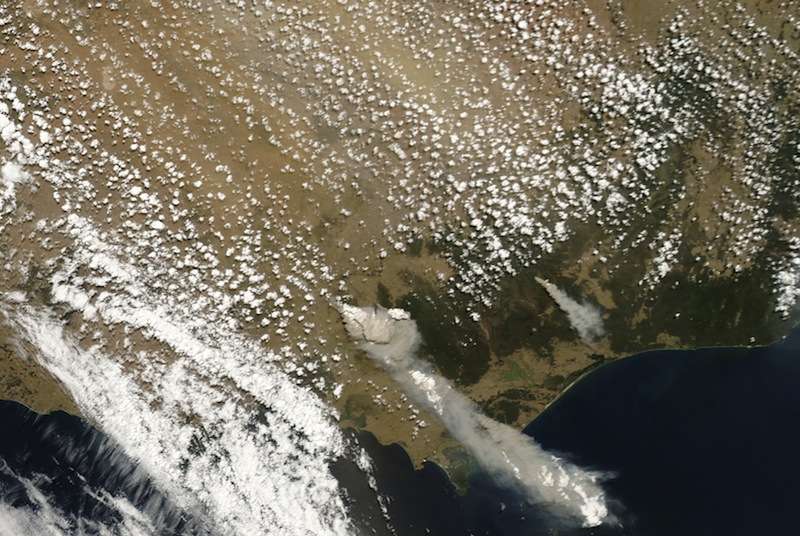
Strange Weather Helped Fuel Australia's 'Black Saturday' Fires

Feb. 7, 2009, was a very bad day in the Australian province of Victoria. For about four weeks, there had been no rain, and a stifling heat wave kept getting worse.
The week before, temperatures surpassed 109 degrees Fahrenheit (43 degrees Celsius) for three days in a row, the only time this has ever happened, said University of Melbourne researcher Todd Lane.
The Forest Fire Danger Index, an empirical measure of fire risk, reached its highest-ever value of 170, which is by far the highest it's ever been; previously, it was thought a value of 100 represented the worst conditions possible, Lane told OurAmazingPlanet.
By the end of the week, on Saturday the 7th, Melbourne Airport recorded its highest temperature ever: 116 F (46.8 C). [9 Hottest Places on Earth]
And then, the province went up in flames.
By the end of what came to be known as "Black Saturday," there were about 400 fires blazing throughout Victoria, killing 173 people, destroying 2,100 homes and wiping out two entire towns, Lane said. Some of the fires were set deliberately and others were caused by spark-emitting fallen power lines and lightning.
While the heat and dry brush set the stage for intense wildfires, unusual weather patterns fanned the flames, according to a study co-authored by Lane in June in the Quarterly Journal of the Royal Meteorological Society.
Sign up for the Live Science daily newsletter now
Get the world’s most fascinating discoveries delivered straight to your inbox.
Sideways tornadoes
"Firefighters reported extraordinary behavior from the Black Saturday bushfires. We wanted to understand what weather characteristics produce these extreme conditions to aid future fire control efforts," Lane said in a statement.
The warm weather created "horizontal convective rolls," which are like eddies of swirling air powered by convection. As the air at the surface warmed and rose, it was forced to move in a corkscrew pattern oriented parallel to the ground by sinking, cooler air, Lane said.
"In some ways, each roll is similar to a tornado laid on its side, but much longer and much weaker," Lane said. These created bands of alternating fast and slower surface winds spaced about 6 miles (10 kilometers) apart, fanning forest fires. The fast winds surpassed 30 mph (50 kph).
"In the slow part of the bands, the fire danger would have been 'severe' and in the fast part of the bands, it was 'catastrophic,'" he said.
Horizontal convective rolls aren't that unusual on warm days, but typically, they are not so thick, widely spaced and powerful. They often arrange cumulus clouds into rows called 'cloud streets,'" Lane said.
Lane and his colleagues used a high-resolution weather forecasting model, which along with the results of the study should help better predict when future fires might happen, and how to minimize fire risk.
"We found that weather events at a horizontal scale of about 10 kilometers introduced variability in the wind, temperature and humidity conditions," Lane said. "These smaller events combined to produce significant variability in fire danger across much of Victoria." The scientists also detected the presence of a phenomenon called an undular bore on Black Saturday. Undular bores are wavelike patterns produced by an incoming cold front. In this case, the bore appeared to reinvigorate the fires after sunset on that fateful date with increased surface winds, Lane said.
Climate impact?
Whether or not climate change played a part in this and other severe fire seasons seen around the world is a tricky question to answer because multiple factors are always involved, like the dryness and weather in Australia.
Lane said it's difficult to attribute a single extreme event like this to climate change.
"What we do know is that the probability of extreme heat waves and extreme temperatures, like those on Black Saturday, increases with global warming," he said.
Reach Douglas Main at dmain@techmedianetwork.com. Follow him on Twitter @Douglas_Main. Follow OurAmazingPlanet on Twitter @OAPlanet. We're also on Facebook and Google+.











